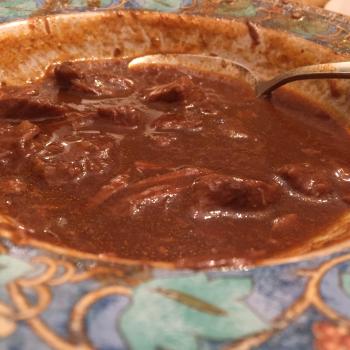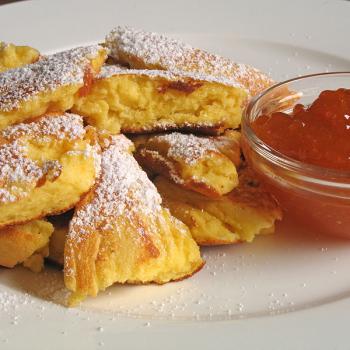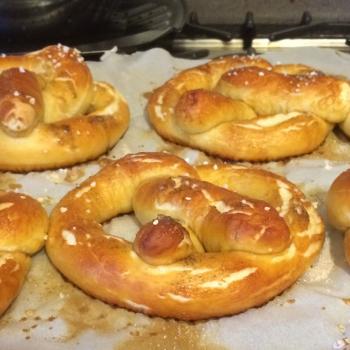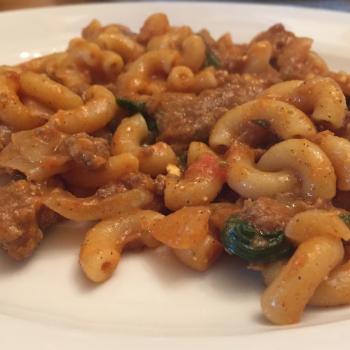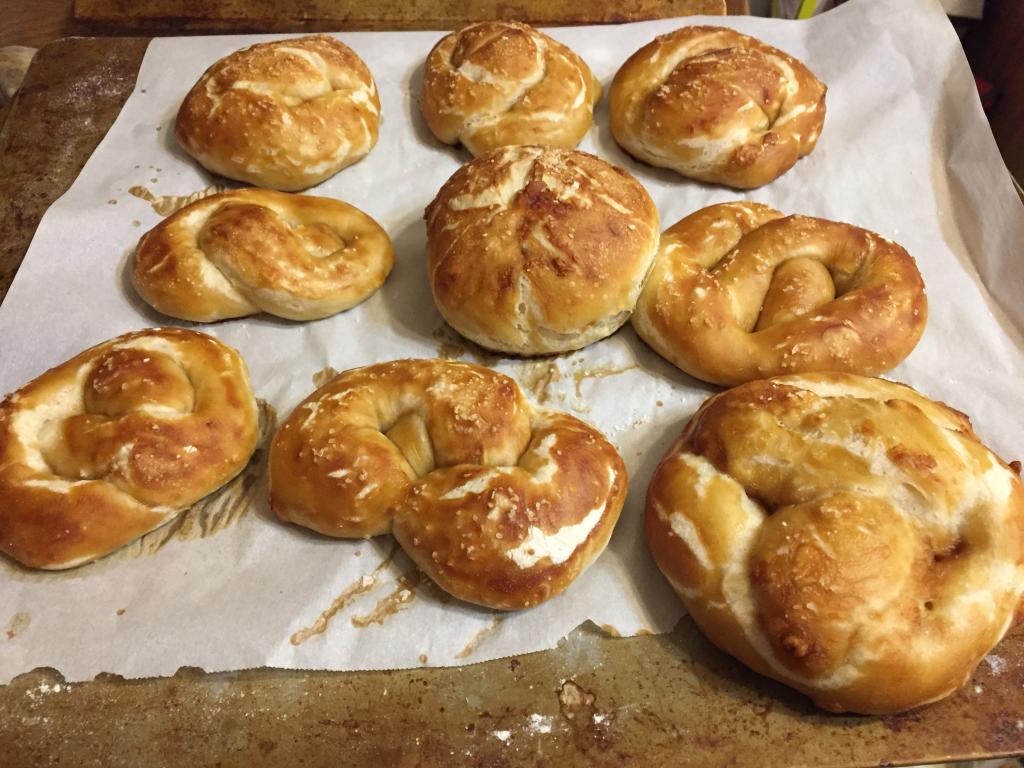
If there’s one thing that’s ubiquitous in Germany but scarcely available here, it’s pretzels.
Sure, it’s possible to find recipes for them, e.g., this recipe for Bavarian Pretzels at allrecipes.com. A fairly generic dough, and a dip in a baking-soda bath before baking. But when I’d made similar recipes, it came out, well, meh. I did some further reading and saw that what’s really needed is a lye bath, and I ordered a container of lye from amazon.com. But that was ages ago, and I was, in the end, intimidated by all of the warnings about lye. Even the authors of the New Artisan Bread in Five Minutes a Day write that they were so intimidated by warnings on their lye package that, they chickened out.
Finally, after my son had bugged me enough about wanting to make pretzels, I summoned up the nerve to undertake the project. Make the dough, shape into pretzels, make a bath of water with a small amount of lye, dip the pretzels one at a time, let rise briefly, and bake. According to the internet, the lye, however much you’re instructed to handle it with gloves, isn’t a danger in the finished product because it’s heavily diluted and because of some sort of chemical reaction during baking.
And they were tasty! I could have baked them for longer for a proper, crispy German pretzel, and if I’d had more skill they would have been better-shaped, but I’m still satisfied, especially since this was a “day before the (low-carb) diet starts” project.
My recipe and process
The basic recipe I took from the above-mentioned Artisan Bread book, which I used often enough that I actually have this in my cookbook collection and is worth the shelf space. Their approach is to create basic recipes that can be used with multiple variations; the recipe for pretzels is the same one as for bagels, though we halved it because their method is to mix up quantities that can be used for multiple loaves. Here’s the halved-quantity recipe:
- 340 grams lukewarm water
- 5 grams yeast
- 10 grams kosher salt
- 15 grams sugar (ideally the recipe calls for Malt powder, with sugar as a second choice; I looked into Malt powder online but never bought it)
- 455 grams bread flour (I ran out of bread flour and had to add some all-purpose flour, so I added some extra gluten)
Combine the ingredients in the order listed, and mix thoroughly (no kneading necessary), then let rise for 2 hours (the book specifies that it should rise and collapse, or flatten on top).
From there, I followed the process as described in New German Cooking, based on the pretzel recipe I had photocopied and tucked away in my “recipes to try” folder long ago.
- Shape the pretzels into pretzels or rolls.
- Line a baking sheet with parchment paper and spray with nonstick cooking spray.
- Combine 15 grams food-grade lye with 2 cups cold water in a bowl, stir to dissolve. (Use gloves, be careful, don’t get on your hands, don’t take a swig of the lye, bath, blah blah blah. I did this on the table, with newspaper underneath.)
- One at a time, submerge the pretzels in the lye solution, then transfer to the parchment paper. Let the pretzels rise for 10 -15 minutes (supposedly ’til they’ve doubled in size; this didn’t happen but it didn’t seem to have mattered).
- Sprinkle with kosher salt, then bake in a 375 degree oven for 10 – 15 minutes (it actually seemed to take longer than that to brown and might have needed even longer to be a proper, crunchy Bavarian pretzel).
I might have just used this recipe from start to finish, but it called for buttermilk and for fresh yeast, and I wasn’t in the mood for seeing if the substitutions (e.g., lemon juice + milk for buttermilk, and dry yeast for fresh yeast) made a difference in the taste of the finished recipe. (The recipes come from their restaurant, where the produce pretzels in volume so would quite reasonably go through the ingredients quickly enough to use fresh yeast.) Might do so next time around, since the “artisan bread” method is a no-knead recipe based on a very “wet” dough, and I would guess the more traditional kneading-required recipe would produce dough that’s easier to shape. Heck, if I do so, I’ll post an update.
So there you have it. Fear not the lye!




